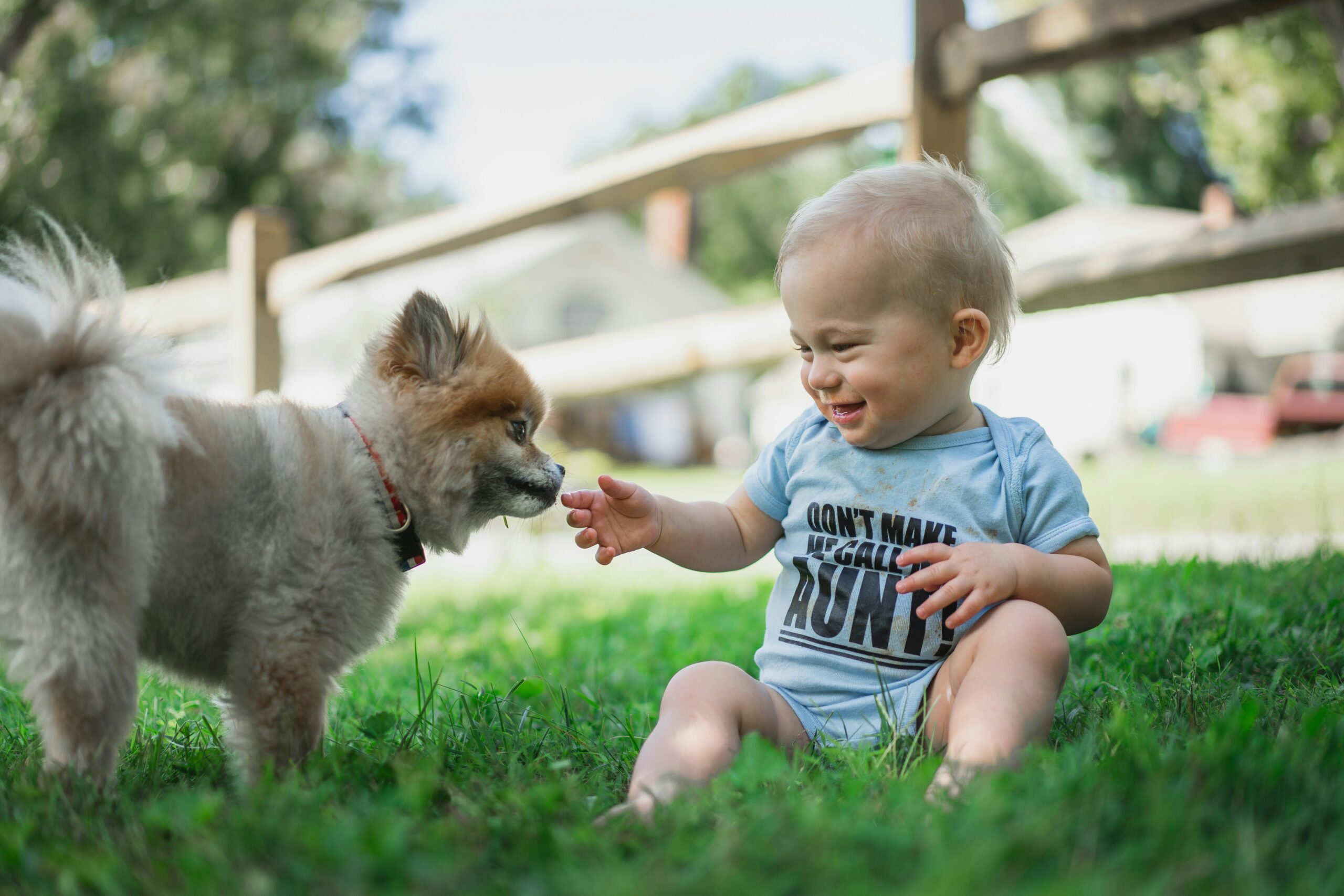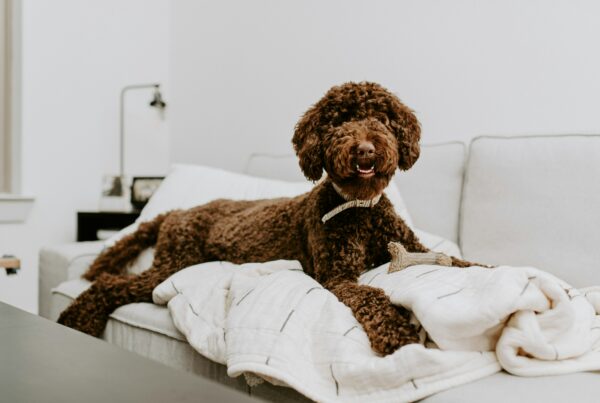Adopting a dog requires more than just love; it involves preparing your home to be a safe and secure place. Therefore, you should prepare a list of essentials before the dog arrives. This helps ease the adjustment period for both pet and pet owners. Adoptions from animal shelters have seen a 70% increase in recent months, making pet ownership a significant responsibility.
Pets are enjoyable, cuddling companions and support during depression and anxiety. Pet ownership is a significant responsibility, and it’s crucial to consider these essentials before welcoming a new furry friend into your home.
Checklist Before Adopting A Dog
Given below are some of the most important items that you must get before bringing home your new furry friend—
1. Carriers And Harnesses
When picking up your new pet, ensure a safe way to transport them home. Therefore, use a travel carrier instead of the collar or leash provided by the animal shelter or breeder. Also, consider using a restraint harness to prevent injuries or injury especially if you have a dog breed that is succeptible to a collapsed trachea and/or you have someone who will be walking the dog that is heavy handed or tends to be on the abupt side when walking/handling the care of your dog.
Carriers: Ensure that the carrier is claw- and bite-resistant. You can find excellent nylon bags with wide entry points and a large pocket on the back for your pet to get in and out. Moreover, place the carrier on the floor behind the car’s front seat for safety.
However, if your dog is too big for a carrier, a restraint harness can keep them secure in the car. You can find a carrier that serves as a walking harness for potty breaks. Nevertheless, multiple buckles and loops can make a harness difficult. Therefore, most owners prefer a walking harness for everyday use.
2. Plan The Potty Training
Potty accidents can be frustrating for pet owners, but it is crucial to be realistic about the time it takes for a puppy to be fully housetrained.
It can take six to 12 months for a puppy to complete house training. Also, treating your new dog as if it were when providing the training is important.
Therefore, to ensure success, manage the environment and keep the dog confined or in your sight at all times. Use leashes, baby gates, or other options to limit freedom and supervise the dog. Moreover, you can use a small cat collar or bell if you struggle to keep up with your dog. However, if you can’t watch your dog, confine them to a small area, like a bathroom or laundry room, and use a crate to train them. After several hours, take your dog to their bathroom spot and praise them when they are eliminated.
You can book pet waste removal services from Pet Domestic before adopting your dog. With these services, you can maintain your home’s and lawn’s health and sanitation and potty train your new member more confidently.
3. Fix A Vet
Before adopting a dog, it is crucial to choose a veterinarian to establish a positive association and ensure your pet’s health. Moreover, the vet will establish a health baseline, monitoring your pet’s health and alerting you early if something goes wrong. Also, you can ask the clinic about any concerns before your pet comes home. However, your veterinarian is your primary care physician. Therefore, choose someone with a proven clinical excellence and customer satisfaction track record.
Furthermore, your vet can provide essential resources for well-animal checkups, immunizations, nutritional consultations, and more. Consequently, establishing a relationship with a family veterinarian and asking questions about adoption is also recommended. Thus, consult with family and friends who have had dogs and Adoption Counselors from the shelter for valuable information.
4. Designate A Space For Them
After adopting a new four-legged family member, creating a special space for them in your home is crucial. Therefore, a crate should have a bed, blanket, toys, litter box, food, and water. Moreover, you must include familiar scents from the shelter or breeder and use a pheromone wall plug-in to keep them calm. Also, when designating a space for your dog, ensure it is safe.
Therefore, fill holes below fences, remove pesticides or harmful chemicals, hide exposed electrical wires, limit chewing items, and secure garbage cans with lids. This is especially important for dogs who like to dig, as planning and ensuring your home is safe for your furry friend is crucial for their well-being.
5. Learn About The Dog’s Past Medical Records
When bringing home a puppy or rescue dog, it’s important to always ask for their veterinarian records, including an updated shot record and spay/neuter information. Additionally, when researching pet insurance and follow-up veterinary care, it’s beneficial to find out if the foster, rescue, or breeder has any knowledge of your dog’s medical history.
Remember that your first veterinary visit may come with a hefty price tag due to the cost of preventative medications. Moreover, you might need to arrange additional shots or antibiotics to support your pet’s health and well-being. However, prepare in advance by saving money to cover these costs.
6. Keep Their Food Ready
When adopting a new dog, knowing any known sensitivities to food or allergens is important. This can help you plan for your pet’s well-being and avoid potential symptoms like sneezing or itching. Dogs eat both meat and vegetables. Therefore, a protein-rich diet is recommended. They require food, water bowls, and treats for training. Moreover, for dietary recommendations, consult the shelter or your vet. Food and water bowls are also essential. Treats are a great training reward.
Thus, to prepare, ask the foster, breeder, or adoption organization if the dog has any known allergens and inquire about their food preferences. Stock up on healthy and enjoyable food items for your new furry friend.
7. Make A Plan For Your Absence
As the national economy revives, many people return to work. If you get a dog, it’s important to be aware of separation anxiety. This can cause unwanted or destructive behavior, such as toileting in the house or chewing pillows. Moreover, when your pet acts out only when you’re out, this may be a sign of anxiety. Chew toys and sophisticated interactive ball-toss machines are just a couple of the engaging and diverting toys that are available to help dogs deal with separation anxiety.
Talk to your veterinarian about stress management and behavioral modification strategies, though, if you’re worried about your pet’s behavior. This can help reduce problem behaviors.
Welcome The New Member
Take help from local pet shelters for adopting pets. Choose a pet that suits your family’s lifestyle. Thus, consider outdoor activities, small spaces, separation anxiety, and quiet time preferences. Smaller breeds may be easier for apartment dwellers, while larger breeds may be suitable for those away from home.
Lastly, you must consider energy level, size, relationship to other animals, and noise level should be considered to prepare everyone for pet care.
Photo credit: https://unsplash.com/photos/a-black-and-white-dog-holding-a-teddy-bear-1LCogGiczlY
Did you find this city dog content helpful? Share it with a friend or link it to social media. Enjoy short clips of silly dogs? Best dog training videos? Holistic puppy training tips? Follow us on instagram @nydognanny or on YouTube at nydognanny. Have some news you needs to get to dog and cat parents stat? Email info@newyorkdognanny.com with your article pitch.




